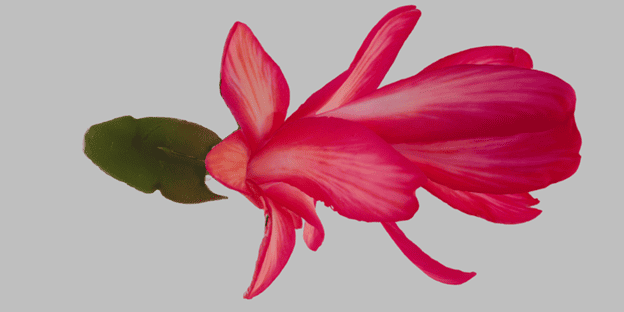Flowers are the vibrant heralds of nature’s incredible biodiversity. They come in a varied array of forms, colors, and functions that are as diverse as life itself. But their intricate structures are not just a feast for the eyes — they’re also keys to understanding various biological processes, including pollination, evolution, and ecosystem dynamics.
The diversity and variety present in different flower structures makes it important to visualize features in detail. But techniques like X-rays are expensive and require a complicated setup. So instead, researchers from the University of Montreal turned to a different technique: photogrammetry.

The flower gram
Despite the complicated name, photogrammetry essentially just means using multiple photos from different angles to construct a model of something. You stitch the photos together to build a 3D model that you can then explore and study in detail.
This approach was commonly used with aerial photography to create model maps that include topographical features. But in recent years, the technique has come down to Earth as well, where it’s been used to digitize and create 3D models of various objects. For instance, it’s commonly used in archaeology and paleontology to create models of artifacts and fossils.
It works something like this. You have your object of interest and you take photos all around it in a controlled geometry, so that you can see it from all angles and the photos have a significant amount of overlap between them. Then, complex algorithms are used to rebuild the 3D model, maintaining the real color and dimensions.

The first advantage is that the technique is cheap and doesn’t require any specialized equipment. The fact that it maintains the flowers’ real colors is also a nice bonus.
“Photogrammetry is much more accessible, since it’s cheap, requires little specialized equipment and can even be used directly in nature,” said Marion Leménager, a doctoral student in biological sciences at UdeM and lead author of the study. “In addition, photogrammetry has the advantage of reproducing the colours of flowers, which is not possible with methods using X-rays.”
With this approach, the researchers have demonstrated the feasibility of digitizing flowers and studying their evolution and features in detail. They also say that this approach can be used to create a large 3D database that can be accessed and studied by people from all around the world.
Not perfect, but definitely good enough
The idea was born when Daniel Schoen, a McGill biology professor, first started exploring the idea at the Institut de recherche en biologie végétale. The results weren’t perfect, he admits, but they convinced Leménager to look into it more.
The technique was subsequently improved, and even though it’s not yet perfect — it still struggles with translucent and transparent parts of flowers, for instance — it’s already been put to good use.
“That said,” added UdeM biology professor Simon Joly, “thanks to the living collections of the Montreal Botanical Garden, the study of plants of the Gesneriaceae family — plants originating from subtropical to tropical regions, of which the African violet is one of the best known representatives — demonstrates that 3D models produced using this technique make it possible to explore a large number of questions on the evolution of the shape and colour of flowers.
“We have also shown that photogrammetry works at least as well as X-ray methods for visible flower structures,” said Joly, who conducts research at the Botanical Garden.
Opening up to the world
Making this type of work accessible to the world is important, the researchers say. They’ve already developed an open-source protocol to promote the use of this method in the context of the comparative study of floral morphology, aiming to encourage more people to contribute to creating a free, online, natural flower collection.
This approach has the potential of revolutionizing how flowers are studied. Large databases with digitized features could, for instance, highlight traits or similarities that have escaped detection until now. By opening up to a larger number of scholars and students, it also encourages collaborative research. Lastly, it enables researchers who may not have access to particular flowers to still explore and study them in 3D.
Ever since naturalists started creating detailed drawings of flowers, there has been a continuous quest to capture the intricate details of these botanical wonders. The advent of photogrammetry represents a significant leap in this quest, offering a digital bridge between the art of traditional botanical illustration and the precision of modern science. This technique promises to enrich and democratize our understanding of floral morphology, evolution, and their roles in ecosystems, ensuring that the legacy of those first naturalists continues to bloom in the digital age.






